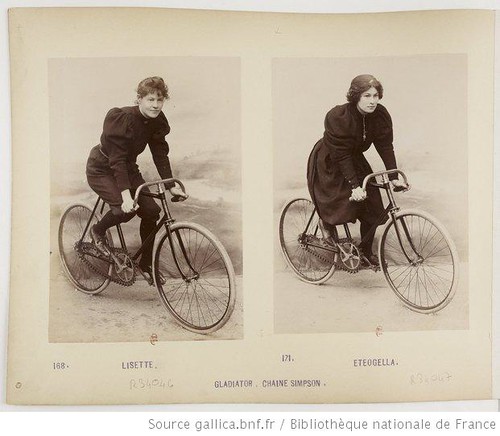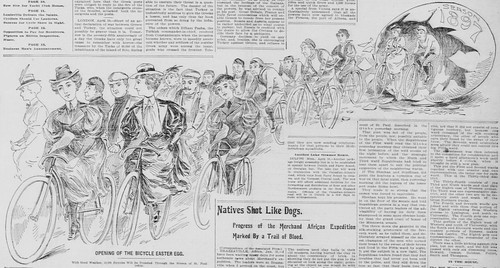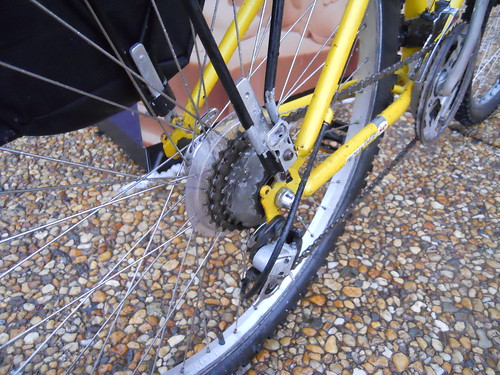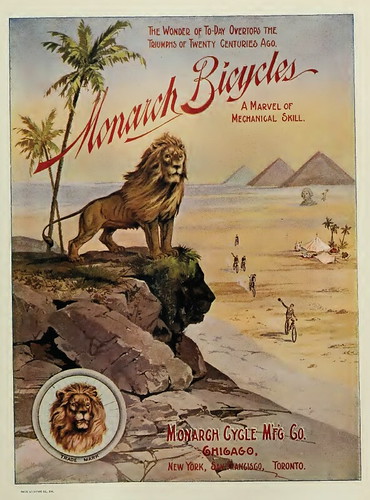 Two women riders, Lisette and Eteogella, riding bikes with "Chaîne à levier Simpson"
Two women riders, Lisette and Eteogella, riding bikes with "Chaîne à levier Simpson"
In this photo album with mostly photographs of then-famous French and other cycling racers there is this page with two photographs of women on bicycles (or more likely, what is one bicycle, a Gladiator) equipped with
a "Simpson chain", which was considered a way of gaining a slight mechanical advantage over a traditional chain (that is a chain fundamentally the same as what we use today).
The chain consisted of a series of metal triangles with pins at the corners (see
this illustration) so that along the inside it was much like an extended version of a present day chain (with the pins a bit further apart). Each link was matched by two other links extending out to a third pin. In the front the force was transferred the same as a bicycle today with teeth into the inside links, but at the rear the force was transferred by the pins on the outside edge. It gave the bikes that used them a distinctive appearance since the chain stood out.
Apparently there were match races to prove the superiority of this chain but ultimately not enough were convinced and people with some engineering experience decided that there was in fact no mechanical advantage to this chain. Certainly it added to the complexity of the drive train of the bikes that used it and to some extent the weight. There don't seem to be lots of photographs of this chain on the Internet on bikes, and although these are somewhat low resolution, they show it reasonably well.










